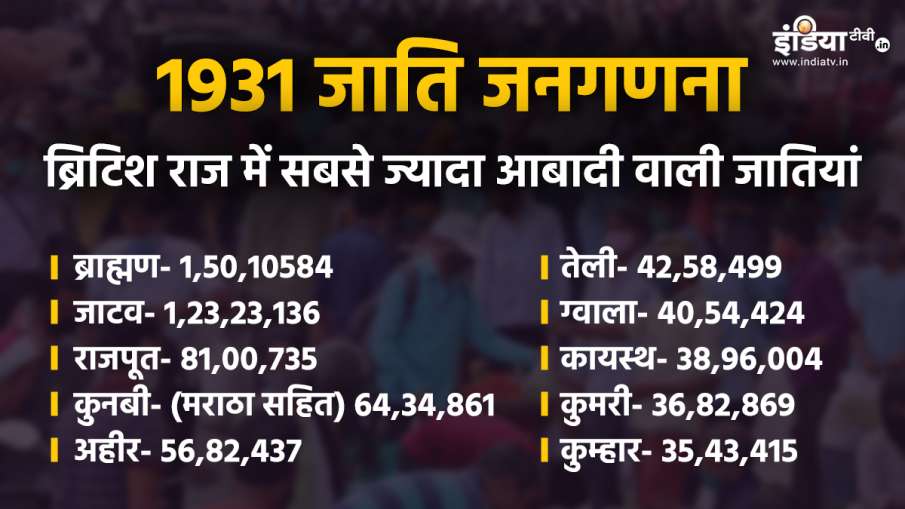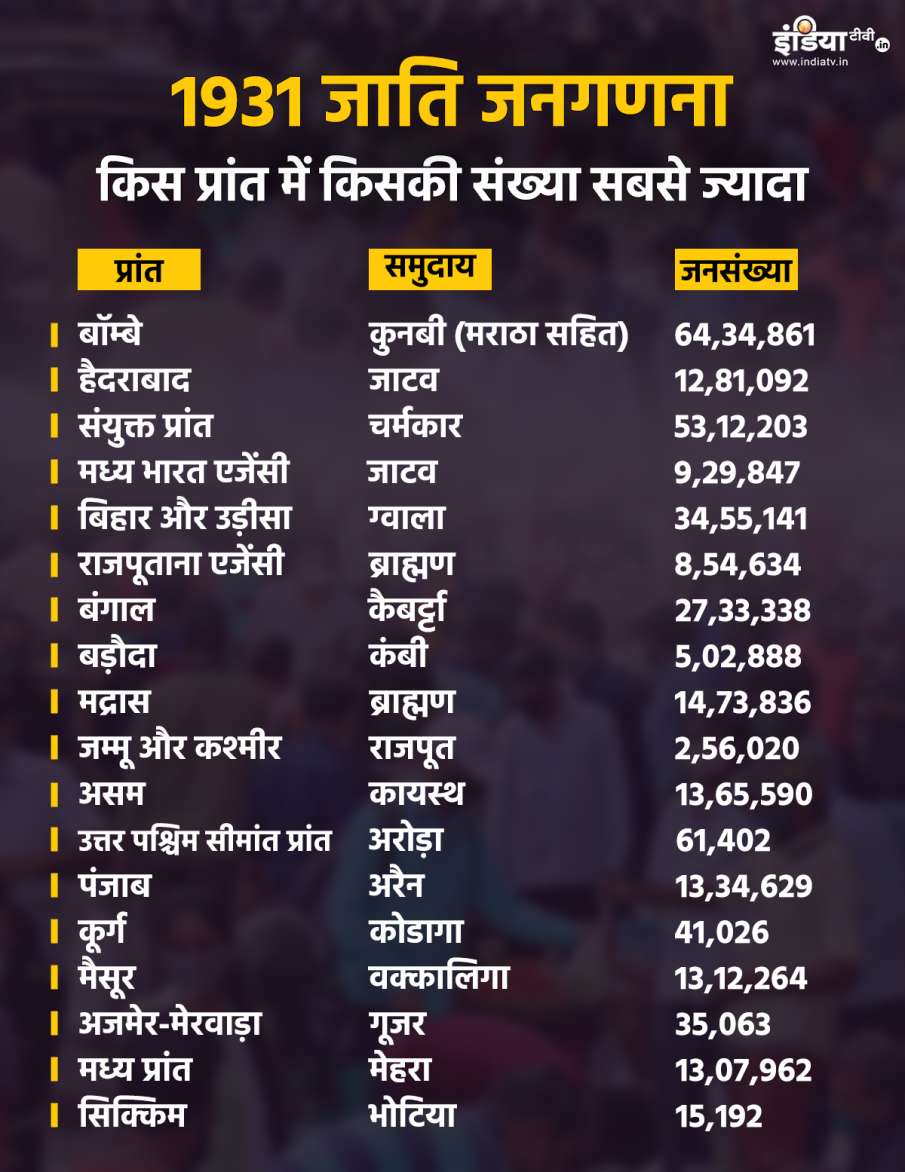The last caste census was held in India in 1931, what were the figures, now why it is necessary?
Caste census
The central government has also decided to include caste census in the upcoming census. Union Minister Ashwini Vaishnav said on 30 April (Wednesday) that the caste census will be included in a “transparent” manner in the upcoming census. Announcing the decisions taken by the Cabinet Committee on Political Affairs, Ashwini Vaishnav said that the census comes under the jurisdiction of the center, but some states have calculated caste in the name of survey.
Vaishnav alleged that caste -based survey has been conducted by the states ruled by opposition parties for political reasons. He said that the Modi government’s resolve is that caste calculations will be included in a transparent manner in the upcoming All India Census process. The census in India to start in April 2020 every 10 years, but the Kovid epidemic was delayed. It has been decided to conduct caste census in the country after 96 years. Earlier this happened in 1931. In such a situation, the figures of the 1931 census and its importance have increased.
Caste census twice in the country
Till now, caste census has taken place twice in the country. This happened for the first time in 1901. This was followed by caste census in 1931. This gives important information about the social structure of the country. It was revealed in the 1931 census that the country’s population was 27 crore at that time and 52 percent of it was castes included in the Other Backward Classes. On this basis, in 1980, the Mandal Commission recommended 27% reservation for OBCs in government jobs and educational institutions, which was implemented in 1990.

1931 caste census data
Casting caste census has not been easy for any government. In 1881, only those castes were included, whose population was more than one lakh. However, in 1901, Varna -based caste census began. After this, people of different castes launched many movements to improve their position.
What is caste census?
In caste census, caste data is also collected along with the names, gender, education, economic status of every person present in the country. The education of caste people in India contributes significantly to jobs and social access. Governments can make strategies better and effective steps can be taken to enhance social equality when you are clearly known about the population of every such caste. Caste census figures can play an important role in making reservation and public welfare policies.
Why Nehru government stopped caste census
After the independence of the country, the government led by Pandit Jawaharlal Nehru decided to stop the census. He believed that national unity is weak and due to the social diversity of the country, division in society can come. After this, governments aims to reduce caste-based identity and strengthen national identity. For this reason, caste census was not done for almost a century.

1931 caste census data
Now why caste census is necessary?
Different leaders and political parties have demanded caste census due to increasing social inequality in the last few decades. Governments have also got caste census in many states. In such a situation, the Center has also decided to include questions related to caste in the census to be held across the country. Union Minister Ashwini Vaishnav also mentioned this. Let us know why caste census is necessary now.
social justice: In case of accurate data on castes, reservation policies in education, jobs and public welfare programs can be implemented more effectively. This will identify the marginalized people and policies can be made to include them in the mainstream.
Policy improvement: According to Poonam Muttreja, Executive Director, Population Foundation of India, caste census can highlight inequalities in education, health care, nutrition and social security. This can help in the manufacture of more inclusive and responsible policies.
Political representation: On the basis of caste data, political parties can reduce representation between different communities and can form their election strategy on this basis. With this, the matter of people of every caste and community can reach the government better.
State level demand: States like Bihar and Telangana have already conducted their caste surveys, which reveal the practical value of such figures and the demand for nationwide survey has arisen.
Socio-economic inequalities: Caste in India has always played an important role in access to opportunities and resources. At present, governments face challenge in making effective policies due to lack of caste -based data.
Caste census challenges
Caste census figures are necessary for governments, but the census has been very difficult. Along with this, census figures and caste -based policies can promote social discrimination. There are thousands of castes and sub -castes in the country. In such a situation, it is very difficult to classify all castes properly. People of the same caste are in different conditions in different states and it is difficult for everyone to make a similar policy. However, careful planning with a transparent approach can deal with these challenges. This can make policies that reduce caste -based discrimination and social differences.
Latest india news

